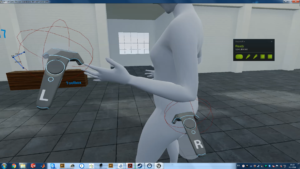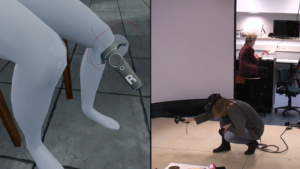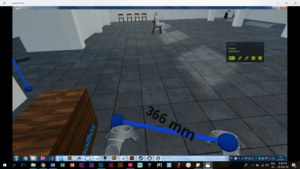3D Digital Human Models (DHMs) provide industrial designers 3D and 4D information on the dimensions of the human body and its range of motion. urrent models are based on outdated data from research on military populations making them unrepresentative for civilian populations. Available DHMs require experience to properly use them, are vague on what they represent and positioning them is demanding.
3D scanning is gaining importance in the field of human factors engineering as personalized products can accurately be formed to match the users body and movement. Examples are the Exo-L, MeshLingerie and numerous cast- and prosthetic designs. Measurements extracted from 3D scans are currently equal or better than measurements done by hand, offering a quick and easy way to renew outdated data. yet no translation of 3D scans into DHMs has been made.
In order to create an easy to use, intuitive ergonomic tool based on full body 3D scans, the medium of Virtual Reality (VR) was chosen. VR has proven itself an intuitive computer interface, promising for the handling of a 4D DHM, as well as increasingly affordable. Based on a literature study and field research requirements for a 4D DHM were put up. A functional prototype was built based on the found requirements and results from creative sessions. The effectiveness of the new tool was investigated through usability research. From this research it can be concluded that 3D scans can be used for creating 4D DHMs and that VR is a good medium to position such DHM for ergonomic assessment. All eight participants succeeded in positioning the DHM to their liking within ten minutes after first introduction to the tool.



